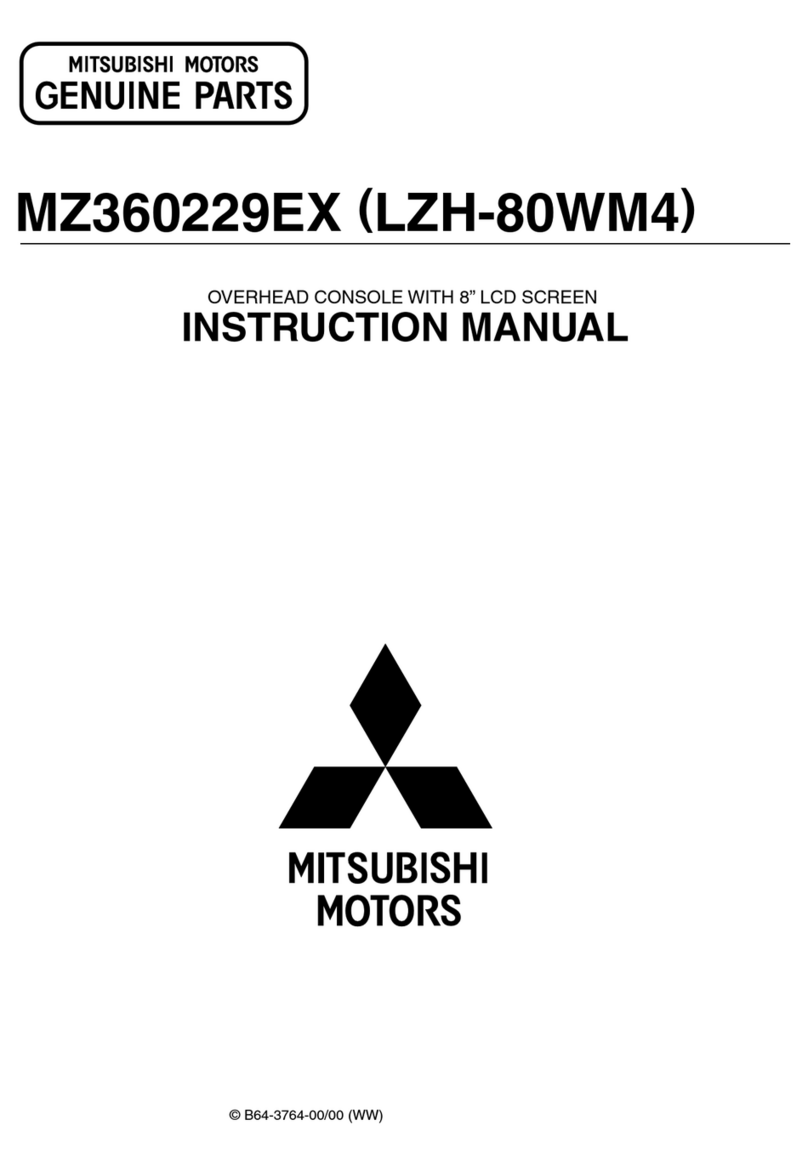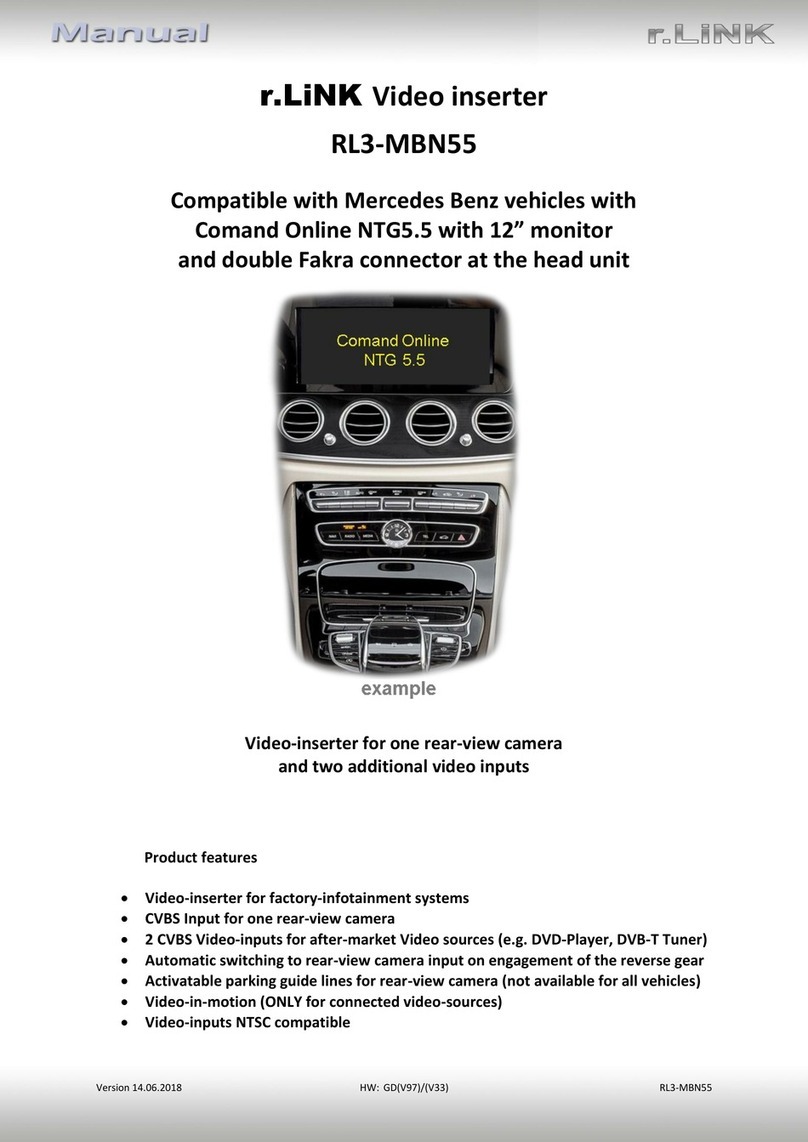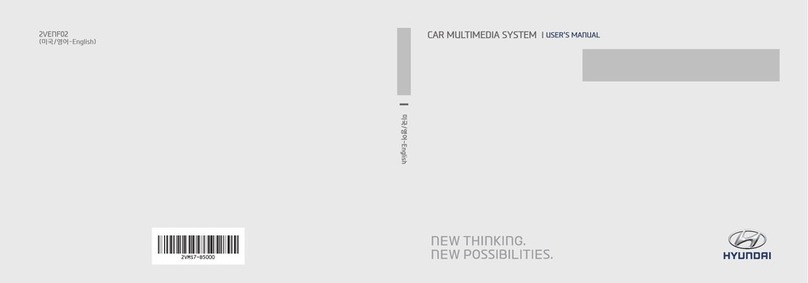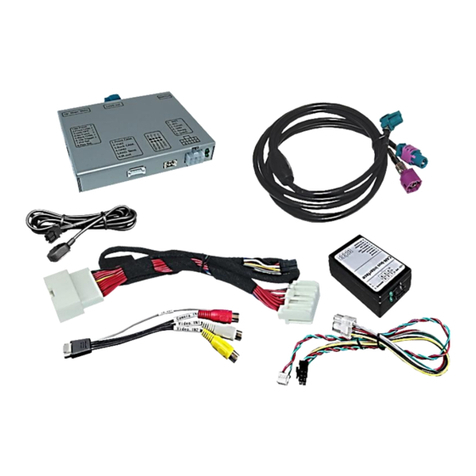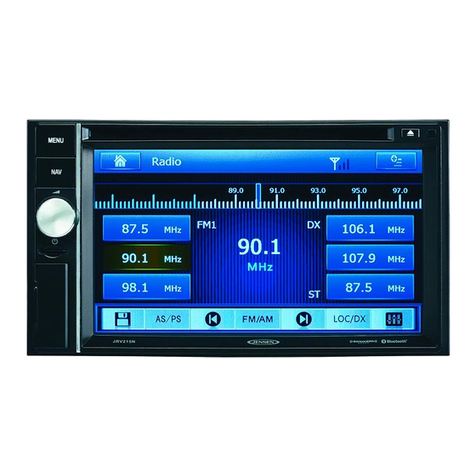Mitsubishi NR-261 User manual

1
Mitsubishi Multi Communication System
Cautions for use . . . . . . . . . . . . . . . . . . . . . . . . . . .1- 2
Introduction . . . . . . . . . . . . . . . . . . . . . . . . . . . . . .1- 3
Basic Operations . . . . . . . . . . . . . . . . . . . . . . . . . .1- 18
Destination . . . . . . . . . . . . . . . . . . . . . . . . . . . . . . .1- 40
Routes . . . . . . . . . . . . . . . . . . . . . . . . . . . . . . . . . .1- 70
Address Book. . . . . . . . . . . . . . . . . . . . . . . . . . . . .1- 87
TMC (Traffic Message Channel). . . . . . . . . . . . . .1- 99
Audio . . . . . . . . . . . . . . . . . . . . . . . . . . . . . . . . . . .1-108
Supported disc types . . . . . . . . . . . . . . . . . . . . . . .1-152
Handling of discs . . . . . . . . . . . . . . . . . . . . . . . . . .1-157
Music Server . . . . . . . . . . . . . . . . . . . . . . . . . . . . .1-160
Visual . . . . . . . . . . . . . . . . . . . . . . . . . . . . . . . . . . .1-218
Information . . . . . . . . . . . . . . . . . . . . . . . . . . . . . .1-244
Settings. . . . . . . . . . . . . . . . . . . . . . . . . . . . . . . . . .1-269
BK-MMCSE12007EN_Combi01_ENG_NLD.book Page 1 Thursday, November 16, 2006 4:13 PM

1-2
Mitsubishi Multi Communication System
1
Cautions for use
E08100100012
NOTE
●For safety reasons, some functions are not possible to
operate while driving.
●If an abnormality (e.g., water or foreign matter enters the
MMCS or the MMCS emits smoke or an abnormal smell)
occurs, do not use the MMCS. Have it inspected at an
authorized Mitsubishi dealer. Do not continue to use the
MMCS or try to repair it yourself.
●The following are characteristics of the LCD and are not
malfunctions:
• Small black spots or bright spots (red, blue, or green) on
the screen.
• When it is cold, the screen becomes darker or reddish or
operations become slower.
• Color and brightness vary according to the viewing
angle.
●Use a clean soft cloth to wipe off any dirt from the screen.
Do not use any cleaners (such as benzene, thinners, anti-
static agents or chemical cloths), as they may damage the
screen.
●Do not use the MMCS for an extended time while the
engine is off, as it will discharge the vehicle battery.
WARNING
!
●Do not operate the Mitsubishi Multi Communica-
tion System (MMCS) while driving.
●Always concentrate on your driving first. Keep your
eyes and mind on the road. If distracted while driv-
ing, you could cause an accident.
●For operation of the system, do not have the engine
running with the vehicle stationary in a garage or
other enclosed, poorly ventilated place. You could be
poisoned by exhaust gases
CAUTION
!
●Drive according to the actual traffic conditions. The
MMCS gives guidance to arrive at the destination,
but it cannot warn the driver of sudden dangers or
potential damage.
●The route guidance of the MMCS may sometimes
differ from the actual road conditions. Drive safely
in accordance with the new road conditions or regu-
lations.
●Do not look at the screen for a long time while driv-
ing, as it can cause an accident.
●Do not disassemble or modify, as it could cause mal-
functions, smoke emissions or fire.
BK-MMCSE12007EN_Combi01_ENG_NLD.book Page 2 Thursday, November 16, 2006 4:13 PM

Mitsubishi Multi Communication System
1-3
1
Introduction
E08100200013
Navigation System Basic Operation Reference
Guide
E08100300014
1. Storing the Home Location
→“When Storing Your Home” (p. 1-91)
2. Searching for the Destination
Use one of the methods below to decide the destination.
• Searching from the Map Screen
→“Destination Setting for Scrolled Position” (p. 1-30)
→“Destination Setting” (p. 1-67)
• Searching from the Address
→“Address/Junction” (p. 1-42)
• Searching from the Points of Interest (POI) Name
→“Points of Interest (POI) Name” (p. 1-52)
3. Arriving at the Destination
4. Going Home
Go back to the stored home location.
→“Go Home” (p. 1-58)
5. Deleting the Route
→“Deleting the Route” (p. 1-86)
Adding an Intermediate Destination
Add an Intermediate Destination to be visited on the way to the
destination.
→“Adding an Intermediate Destination” (p. 1-81)
Deciding Locations to Store
Destinations and Intermediate Destinations can be easily
selected if frequently visited locations are stored.
→“Storing a New Location” (p. 1-87)
→“Editing a Location” (p. 1-94)
Viewing the Route
The route to the destination can be viewed.
→“Viewing the Route” (p. 1-70)
Deciding the Route Search Conditions
The route search for the destination can be changed.
→“Showing the Route (3 Routes)” (p. 1-77)
BK-MMCSE12007EN_Combi01_ENG_NLD.book Page 3 Thursday, November 16, 2006 4:13 PM

1-4
Mitsubishi Multi Communication System
1
Outline of the System
E08100400015
System
●Male or female voice guidance is available in 9 languages.
(English, Francais, Deutsch, Nederlands*1, Portugues,
Espanol, Svenska, Italiano, Dansk)
●The schedule can be managed with the calendar function.
(p. 1-244)
●DVDs can be played. (p. 1-218)
●Music CDs can be recorded and played using the Music
Server. (p. 1-134, 1-160)
Easy Operation Setting
●Most settings are performed using the touch panel, ena-
bling a direct operation feeling.
Destination Setting
●Addresses and nearby POIs can be easily searched for and
set as the destination. (p. 1-42, 1-59)
●A route can be set for returning home. (p. 1-58)
●A new destination can be set from the 20 destinations that
have been previously set. (p. 1-56)
Map Guidance
●POI icons can be displayed on the map. There are 40 POI
icon types. (p. 1-292)
●The map colours can be changed. (p. 1-294)
●Markings can be displayed on the road on which the vehi-
cle is being driven. (p. 1-295)
Routing
●Detour routes can be set with specified distances or streets
to avoid. (p. 1-74)
●A route can be selected from 3 routes that have different
calculation conditions. (p. 1-77)
●Areas to avoid can be set. (p. 1-303)
Voice Guidance
●Guidance is given for the required information at the opti-
mum time. (p. 1-34)
●A male or female voice can be selected*1. (p. 1-285)
Vehicle information display
(Available on OUTLANDER only)
●You can check or set driving information.
●You can check distance to empty, distance driven after
refuelling, and driving time.
NOTE
●*1: Only a male voice is available for Dutch, and different
dialects can be selected.
BK-MMCSE12007EN_Combi01_ENG_NLD.book Page 4 Thursday, November 16, 2006 4:13 PM

Mitsubishi Multi Communication System
1-5
1
Parts Name and Functions
E08100500016
Roles of the Panel Operations Keys
E08100600017
1- [MODE] Key
Displays the AV mode selection screen.
2- [AUDIO] Key
Switches between the AV screen and the NAVI screen.
3- [VOL] Key
Adjusts the AV volume.
4- [PWR] Key
Turns ON and OFF the AV functions.
5- [SET] Key
Displays the Settings screen.
6- [OPEN] Key
Opens and closes the monitor panel.
7- [ENT] Key
Implements the selected item. For some operations, touching
and implementation are performed simultaneously.
8- Joystick
Scrolls the maps and implements item selection.
9- [MENU] Key
Displays the Navi menu screen.
10- [SCALE] Key
Changes the map scale.
11- [NAVI] Key
Displays the current location screen.
12- [INFO] Key
Displays the Info screen.
BK-MMCSE12007EN_Combi01_ENG_NLD.book Page 5 Thursday, November 16, 2006 4:13 PM

1-6
Mitsubishi Multi Communication System
1
Role of the Steering Switch
E08100700018
GPS Measurement
E08100800019
GPS
GPS is the acronym for Global Positioning System, a system
developed and operated by the USA.
The system uses GPS satellites that orbit the Earth in space at
an altitude of approximately 20,000 km. Electromagnetic
waves from at least three of these satellites are received on the
Earth by the system, making it possible to learn the current
position.
Map Matching
When traveling with just the GPS, there may be errors in the
current position display. In such case, “map matching” is the
function that compensates for this error by assuming that vehi-
cles travel on roads and placing the current position on a
nearby road.
1- [+], [-] Key
Adjust the volume during audio function playback.
2- [],[]Key
Move up and down radio stations, move to the next or previ-
ous track during CD playback, and moves to the next or pre-
vious chapter during DVD playback.
3- [MODE] Key
Toggles the AV mode each time this key is pressed.
BK-MMCSE12007EN_Combi01_ENG_NLD.book Page 6 Thursday, November 16, 2006 4:13 PM

Mitsubishi Multi Communication System
1-7
1
GPS antenna position
The position of the vehicle is determined from the weak elec-
tromagnetic waves from GPS satellites received by the GPS
antenna.
NOTE
●Since it may not be possible to accurately display the
vehicle position if the electromagnetic waves from the
GPS satellite are blocked, be sure to obey the following.
●Do not attach reflective-type films or films containing car-
bon to the window glass.
●Do not place objects on top of or close to the GPS
antenna.
●Do not use 1.5 G digital communication equipment, per-
sonal computers, etc. near the GPS antenna.
PAJERO
OUTLANDER
BK-MMCSE12007EN_Combi01_ENG_NLD.book Page 7 Thursday, November 16, 2006 4:13 PM

1-8
Mitsubishi Multi Communication System
1
Situations where accurate measurement is not possible
●Inside a tunnel or indoor parking area
●Under a two-tier motorway
●Area with many high-rise buildings
BK-MMCSE12007EN_Combi01_ENG_NLD.book Page 8 Thursday, November 16, 2006 4:13 PM

Mitsubishi Multi Communication System
1-9
1
●Between closely-spaced trees
The US Tracking and Control Centre controls the satellites.
Sometimes the electromagnetic waves are stopped during
upgrades or repairs to the system.
NOTE
●Do not block the electromagnetic waves, from GPS satel-
lites by placing objects on or around the GPS antenna.
●Avoid using 1.5 G digital communication equipment close
to the GPS antenna. Doing so may make it impossible to
accurately measure position.
Situations where errors occur in the current location
and direction
●Errors sometimes occur when the accuracy of the GPS
satellite unit is poor.
●The GPS satellites are controlled by the United States
Department of Defense, so sometimes the satellite itself
intentionally sends incorrect position data. The measure-
ment error will increase in this kind of situation.
●Sometimes sufficient accuracy is not possible because the
distribution of the GPS satellites is poor (when the satel-
lites are aligned in approximately the same direction or
height). (The best accuracy for GPS measurement is when
signals are received from multiple satellites; a satellite
directly over the vehicle and others just over the horizon
to the north, south, east and west.)
●Regarding the height and directional accuracy of GPS
measurement, errors are slightly more likely in the hori-
zontal direction.
●Electromagnetic waves from satellites higher than the
vehicle height can be received, but electromagnetic waves
cannot physically be received from satellites positioned
lower than the vehicle height (on the far side of the Earth).
This means that an adequate height comparison is not pos-
sible.
BK-MMCSE12007EN_Combi01_ENG_NLD.book Page 9 Thursday, November 16, 2006 4:13 PM

1-10
Mitsubishi Multi Communication System
1
3D Measurement
When valid electromagnetic waves can be received from at
least four GPS satellites, the 3D positions of latitude, longitude
and height are calculated.
2D Measurement
When valid electromagnetic waves can only be received from
three or less GPS satellites, the height is assumed to be
unchanged from the previous measurement and the 2D posi-
tions of latitude and longitude are calculated. If this happens,
the accuracy of the position is less than the 3D measurement.
No Measurement
If no valid electromagnetic waves can be received from the
GPS satellites, there is no measurement.
Error in the Current Location
E08100900010
In situations such as the following, the current location may not
be correctly displayed.
●Vehicle was moved without it being driven (for example
when transported on a ferry or trailer)
BK-MMCSE12007EN_Combi01_ENG_NLD.book Page 10 Thursday, November 16, 2006 4:13 PM

Mitsubishi Multi Communication System
1-11
1
●Vehicle direction was changed without turning on the
engine (for example on a turntable in a parking area)
●After replacing the tyres or chains
●When driving on roads with elevation differences, such as
mountain roads with steep inclines
BK-MMCSE12007EN_Combi01_ENG_NLD.book Page 11 Thursday, November 16, 2006 4:13 PM

1-12
Mitsubishi Multi Communication System
1
●When driving on roads that continue for a long time in a
straight line or gentle curve (for example motorways)
●When driving around tight hairpin corners
●When meandering on wide roads
●When driving on Y-shaped roads
BK-MMCSE12007EN_Combi01_ENG_NLD.book Page 12 Thursday, November 16, 2006 4:13 PM

Mitsubishi Multi Communication System
1-13
1
●When starting and stopping frequently at low speed, such
as in a traffic jam
●When driving on snowy or unpaved roads
●When driving on roads parallel to others
●When driving on grid-shaped roads
BK-MMCSE12007EN_Combi01_ENG_NLD.book Page 13 Thursday, November 16, 2006 4:13 PM

1-14
Mitsubishi Multi Communication System
1
●When driving on a road that turns around in the same
direction, such as a loop-shaped bridge or interchange
●When driving on roads where map data is not available
●When GPS measurements could not be made for a long
time
BK-MMCSE12007EN_Combi01_ENG_NLD.book Page 14 Thursday, November 16, 2006 4:13 PM

Mitsubishi Multi Communication System
1-15
1
Route Calculation
E08101000018
●The most up-to-date road information and regulation data
possible have been used for the maps and information
used in this system. However, subsequent road changes
may cause the information to differ from the actual condi-
tions, and inappropriate guidance may be given. Be sure
to drive according to the actual traffic conditions.
●Not all roads are subject to the recommended route guid-
ance.
●The calculated route is only one example of a road that
reaches the destination, which the system calculated by
taking into account road types and traffic conditions. It is
not necessarily always the best route.
●Not all ferry routes are necessarily stored in the data. Fur-
ther, even if ferry routes are prioritized they are not neces-
sarily used in the route.
●The route selection is a comprehensive judgement based
on factors such as the road type, distance and road width,
but this does not mean that the best route is always
selected. Think of the route as only one example of many
possible routes.
●The route guidance is performed for the roads subject to
the route guidance that are the nearest to the destination or
Intermediate Destination. For this reason, an inappropriate
route may be displayed if the set route includes a location
where many roads are concentrated together, such as at an
interchange. Further, if the destination or Intermediate
Destination becomes far away from the junctions of roads
subject to the route guidance, a route may be displayed
that passes the destination or Intermediate Destination.
●Traffic lanes in both directions are separately input for
wide roads or roads with central dividers. If a destination
(Intermediate Destination) is set in this kind of position, a
route may be selected that passes and then returns to the
destination (Intermediate Destination).
●The first guidance location is the road nearest to the start-
ing position (vehicle).
●The final guidance location is the road nearest to the loca-
tion set as the destination.
●If while driving along route seems very indirect, it is pos-
sible that a route has been set in the direction opposite to
the current vehicle direction.
●The guidance route may result in the vehicle being on the
opposite side of a river or station from that which is
desired. If this happens, move the destination near to the
desired road.
●Sometimes it will not be possible to avoid toll roads or
ferry routes, when there are no other suitable routes.
●If three recommended routes do not exist, the same route
may be repeated.
●Sometimes the enlarged junction map will not be dis-
played immediately after the route calculation, or due to
other conditions.
BK-MMCSE12007EN_Combi01_ENG_NLD.book Page 15 Thursday, November 16, 2006 4:13 PM

1-16
Mitsubishi Multi Communication System
1
Gracenote Music® Recognition ServiceSM
E08101100019
Music recognition technology and related data are provided by
Gracenote®.
Gracenote is the industry standard in music recognition tech-
nology and related content delivery. For more information visit
www.gracenote.com.
CD and music-related data from Gracenote, Inc., copyright©
2000-2006 Gracenote. Gracenote Software, copyright© 2000-
2006 Gracenote. This product and service may practice one or
more of the following U.S. Patents: #5,987,525; #6,061,680;
#6,154,773, #6,161,132, #6,230,192, #6,230,207, #6,240,459,
#6,330,593, and other patents issued or pending. Some services
supplied under licence from Open Globe, Inc. for U.S. Patent:
#6,304,523.
Gracenote and CDDB are registered trademarks of Gracenote.
The Gracenote logo and logotype, and the “Powered by
Gracenote” logo are trademarks of Gracenote.
End-User Licence Agreement
USE OF THIS PRODUCT IMPLIES ACCEPTANCE OF THE
TERMS BELOW.
Gracenote® MusicID® Terms of Use
This device contains software from Gracenote, Inc. of Emer-
yville, California (“Gracenote”). The software from
Gracenote (the “Gracenote Software”) enables this applica-
tion to do online disc identification and obtain music-related
information, including name, artist, track, and title informa-
tion (“Gracenote Data”) from online servers (“Gracenote
Servers”) and to perform other functions. You may use
Gracenote Data only by means of the intended End-User
functions of this device.
You agree that you will use Gracenote Data, the Gracenote
Software, and Gracenote Servers for your own personal non-
commercial use only. You agree not to assign, copy, transfer
or transmit the Gracenote Software or any Gracenote Data to
any third party. YOU AGREE NOT TO USE OR EXPLOIT
GRACENOTE DATA, THE GRACENOTE SOFTWARE,
OR GRACENOTE SERVERS, EXCEPT AS EXPRESSLY
PERMITTED HEREIN.
BK-MMCSE12007EN_Combi01_ENG_NLD.book Page 16 Thursday, November 16, 2006 4:13 PM

Mitsubishi Multi Communication System
1-17
1
You agree that your non-exclusive licence to use the
Gracenote Data, the Gracenote Software, and Gracenote
Servers will terminate if you violate these restrictions. If
your licence terminates, you agree to cease any and all use of
the Gracenote Data, the Gracenote Software, and Gracenote
Servers. Gracenote reserves all rights in Gracenote Data, the
Gracenote Software, and the Gracenote Servers, including all
ownership rights. Under no circumstances will Gracenote
become liable for any payment to you for any information
that you provide. You agree that Gracenote, Inc. may enforce
its rights under this Agreement against you directly in its
own name.
The Gracenote MusicID Service uses a unique identifier to
track queries for statistical purposes.
The purpose of a randomly assigned numeric identifier is to
allow the Gracenote MusicID service to count queries with-
out knowing anything about who you are. For more informa-
tion, see the web p.for the Gracenote Privacy Policy for the
Gracenote MusicID Service.
The Gracenote Software and each item of Gracenote Data
are licensed to you “AS IS.”
Gracenote makes no representations or warranties, express
or implied, regarding the accuracy of any Gracenote Data
from in the Gracenote Servers. Gracenote reserves the right
to delete data from the Gracenote Servers or to change data
categories for any cause that Gracenote deems sufficient. No
warranty is made that the Gracenote Software or Gracenote
Servers are error-free or that functioning of Gracenote Soft-
ware or Gracenote Servers will be uninterrupted. Gracenote
is not obligated to provide you with new enhanced or addi-
tional data types or categories that Gracenote may provide in
the future and is free to discontinue its online services at any
time.
GRACENOTE DISCLAIMS ALL WARRANTIES
EXPRESS OR IMPLIED, INCLUDING, BUT NOT LIM-
ITED TO, IMPLIED WARRANTIES OF MERCHANTA-
BILITY, FITNESS FOR A PARTICULAR PURPOSE,
TITLE, AND NON-INFRINGEMENT. GRACENOTE
DOES NOT WARRANT THE RESULTS THAT WILL BE
OBTAINED BY YOUR USE OF THE GRACENOTE
SOFTWARE OR ANY GRACENOTE SERVER. IN NO
CASE WILL GRACENOTE BE LIABLE FOR ANY CON-
SEQUENTIAL OR INCIDENTAL DAMAGES OR FOR
ANY LOST PROFITS OR LOST REVENUES.
© Gracenote 2006Version 2.2
BK-MMCSE12007EN_Combi01_ENG_NLD.book Page 17 Thursday, November 16, 2006 4:13 PM

1-18
Mitsubishi Multi Communication System
1
Basic Operations
E08101200010
Starting the MMCS
E08101300011
1. Turn “ON” the ignition switch. The opening screen is dis-
played.
If any function other than AUDIO was used last time, go
to Step 2.
NOTE
●If special days and anniversaries (p. 1-244) have been set,
when the date matches the settings, the set icon is dis-
played on screen.
CAUTION
!
●When parking the vehicle to operate the system,
park in a safe location and do not stop in no-stop-
ping zones.
●Do not use for a long time while the engine is off.
Depending on the condition of the battery, it could
make it impossible to start the engine.
BK-MMCSE12007EN_Combi01_ENG_NLD.book Page 18 Thursday, November 16, 2006 4:13 PM

Mitsubishi Multi Communication System
1-19
1
2. Touch the desired language.
3. Touch [OK]. After a moment, the display is changed to
the navigation screen.
Operation Instructions
E08101400012
With this navigation system, operations can be performed by
pressing the panel keys or touching the screen buttons.
Operate the screen by touching lightly with a fingertip.
WARNING
!
●While driving, do not perform complicated opera-
tions or concentrate on the screen. Failure to pay
attention to the road ahead may cause traffic acci-
dents. Have a front seat passenger perform the oper-
ations, or stop the car in a safe location before
operating.
BK-MMCSE12007EN_Combi01_ENG_NLD.book Page 19 Thursday, November 16, 2006 4:13 PM

1-20
Mitsubishi Multi Communication System
1
NOTE
●Do not touch the screen with wet hands or press it with
hard, sharp objects, as this may cause malfunction.
The Screens in this Manual
The screens described in this manual are for explanation. They
may be different from actual screens, and their operation may
also be different.
Lists
E08101500013
This section explains the list operation buttons when a list has
been displayed.
Menu Screens
E08101600014
Scroll Menu
E08101700015
After scrolling the map, press the [ENT] key to display.
Scrolls forward through a list one line at a time.
Scrolls forward through a list one page at a time.
Scrolls back through a list one line at a time.
Scrolls back through a list one page at a time.
[Set as Dest]
Sets the cursor position as the destination.
→“Destination Setting for Scrolled Position” (p. 1-30)
[Address Book]
The cursor position can be stored in the address book.
→“Storing a New Location” (p. 1-87)
[Nearby POI]
POI can be searched for in the vicinity of the cursor position.
→“Nearby POI” (p. 1-59)
[Location]
BK-MMCSE12007EN_Combi01_ENG_NLD.book Page 20 Thursday, November 16, 2006 4:13 PM
Table of contents
Other Mitsubishi Car Video System manuals
Popular Car Video System manuals by other brands

Audiovox
Audiovox 50-0246x-015 Series installation instructions

Kenwood
Kenwood KVT-725DVD installation manual
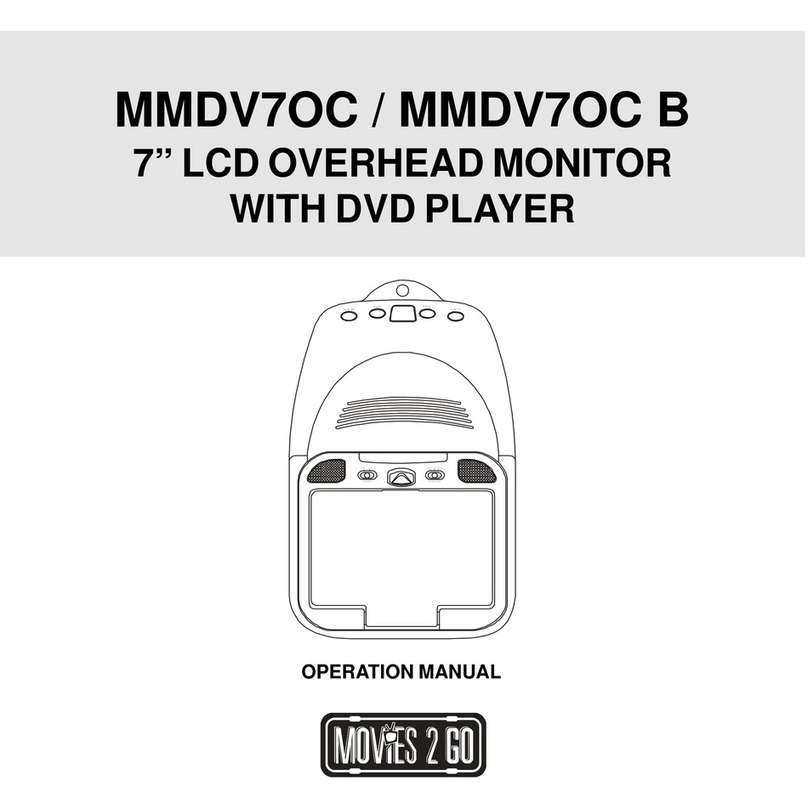
Audiovox
Audiovox MMDV70CB Operation manual
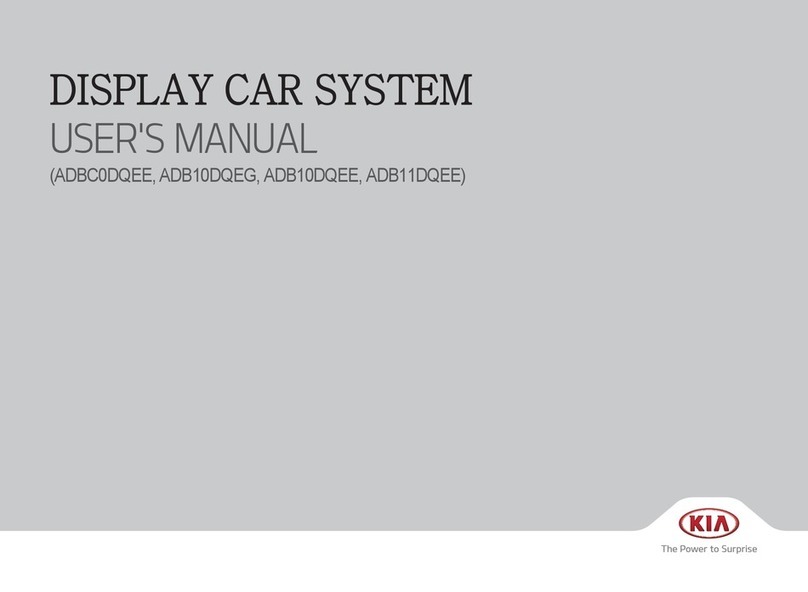
Kia
Kia ADBC0DQEE user manual
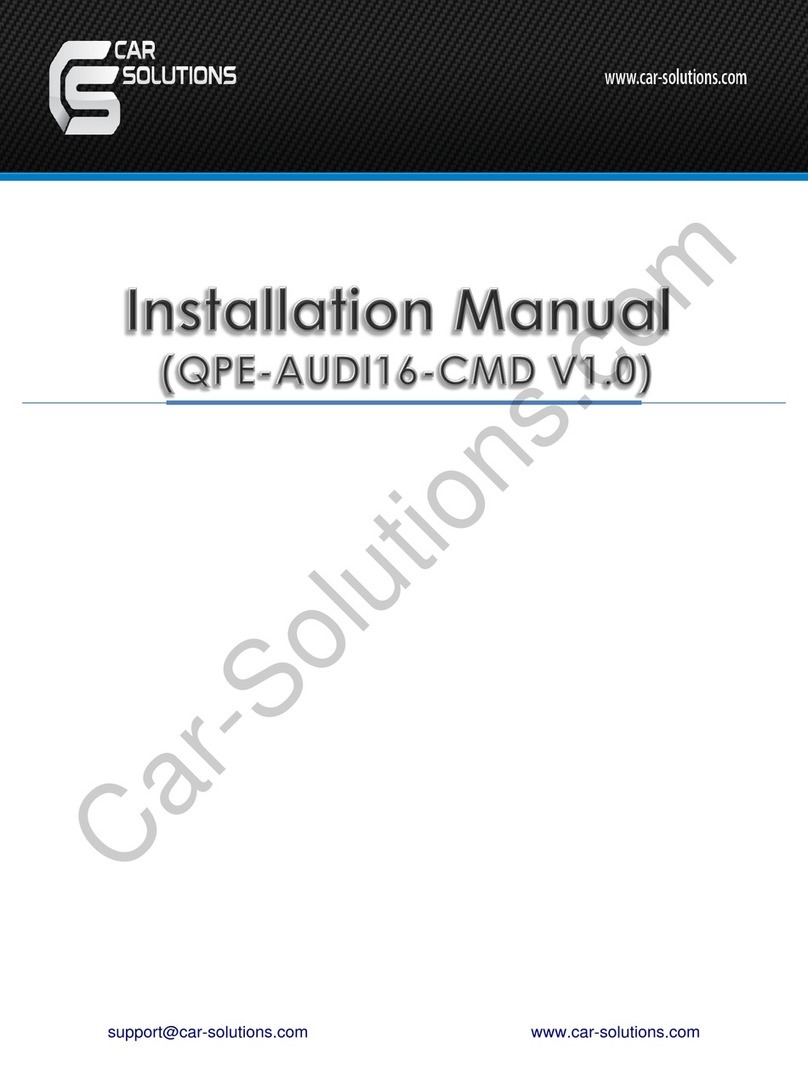
Car Solutions
Car Solutions QPE-AUDI16-CMD installation manual
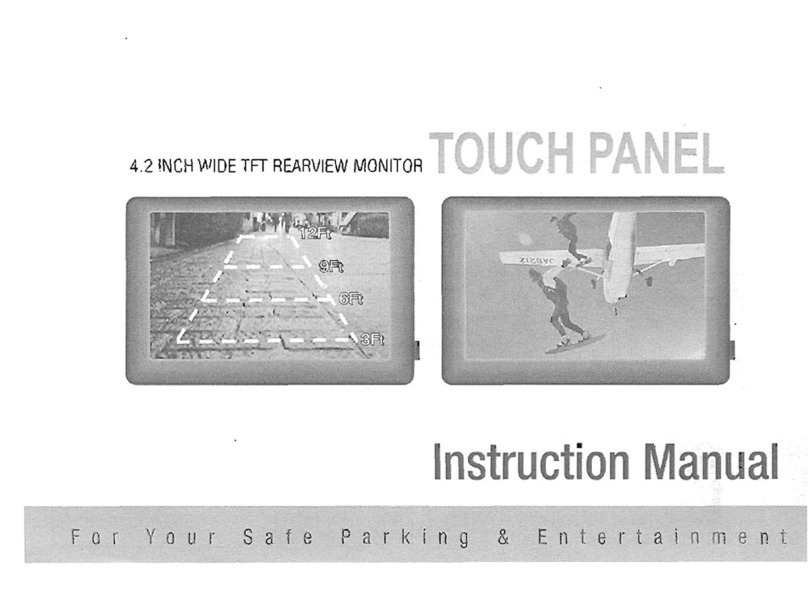
Farenheit
Farenheit 4.2 inch Wide TFT Rearview Monitor instruction manual
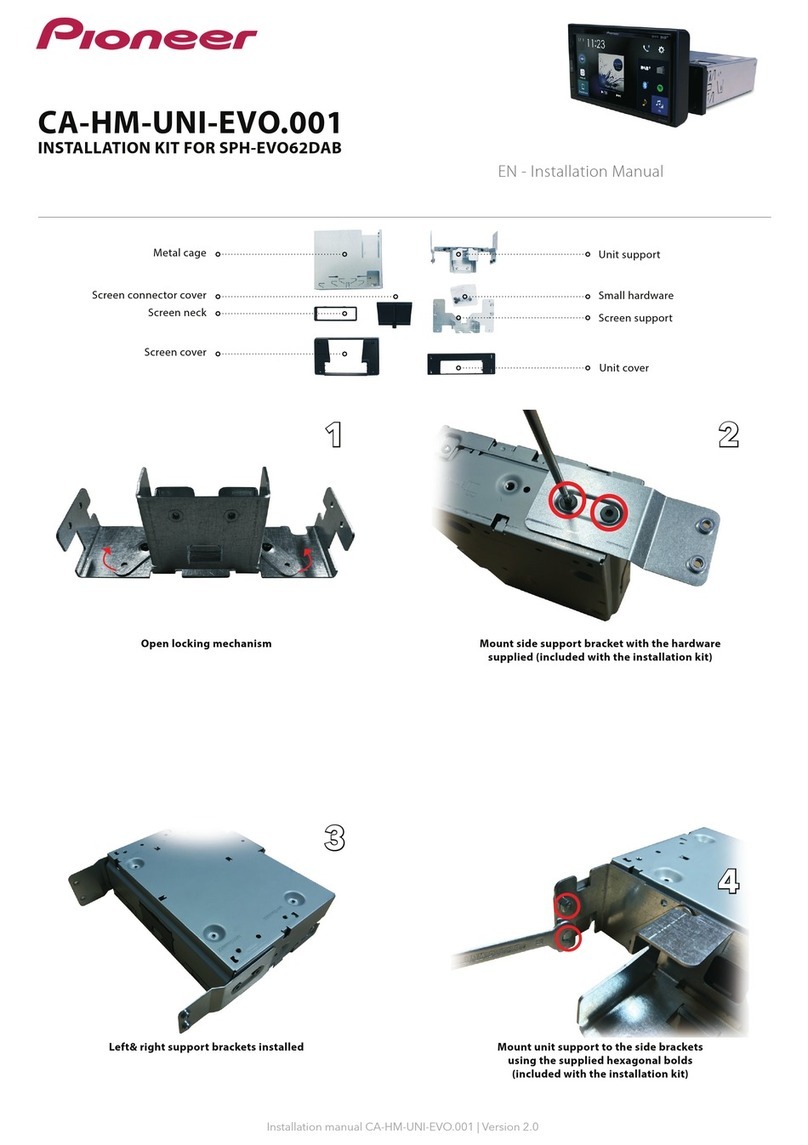
Pioneer
Pioneer CA-HM-UNI-EVO.001 installation manual

Caliber
Caliber RDN 894BT user manual

Dual
Dual XDVD1262 Installation & owner's manual

Pioneer
Pioneer AVH-P4900DVD - DVD Player With LCD Monitor installation manual
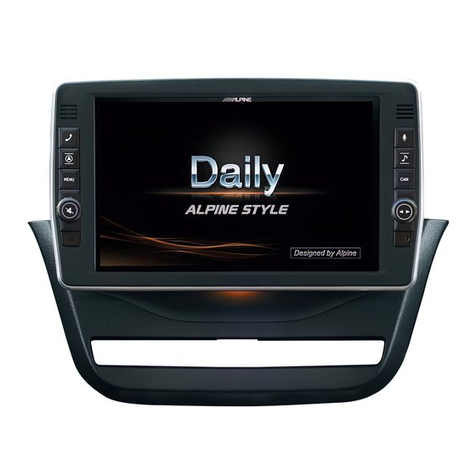
Alpine
Alpine XXL Premium X903D-ID installation manual
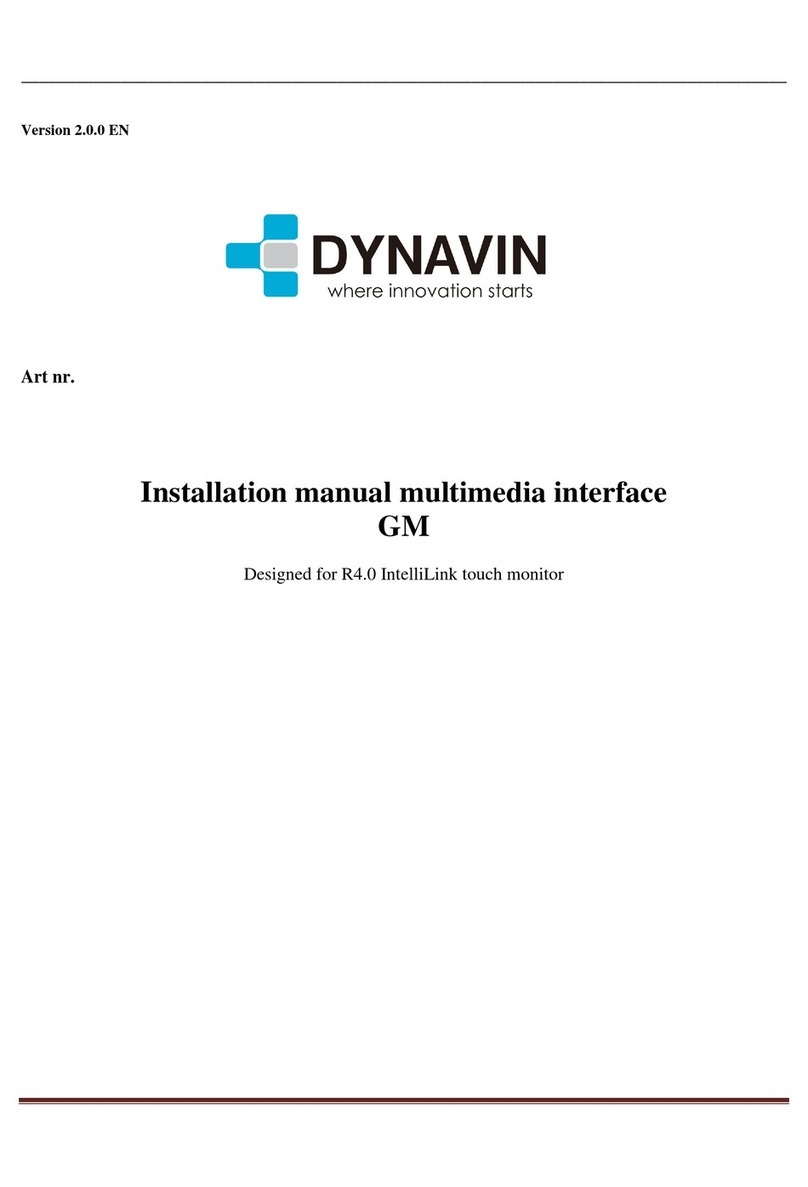
Dynavin
Dynavin R 4.0 IntelliLink installation manual

